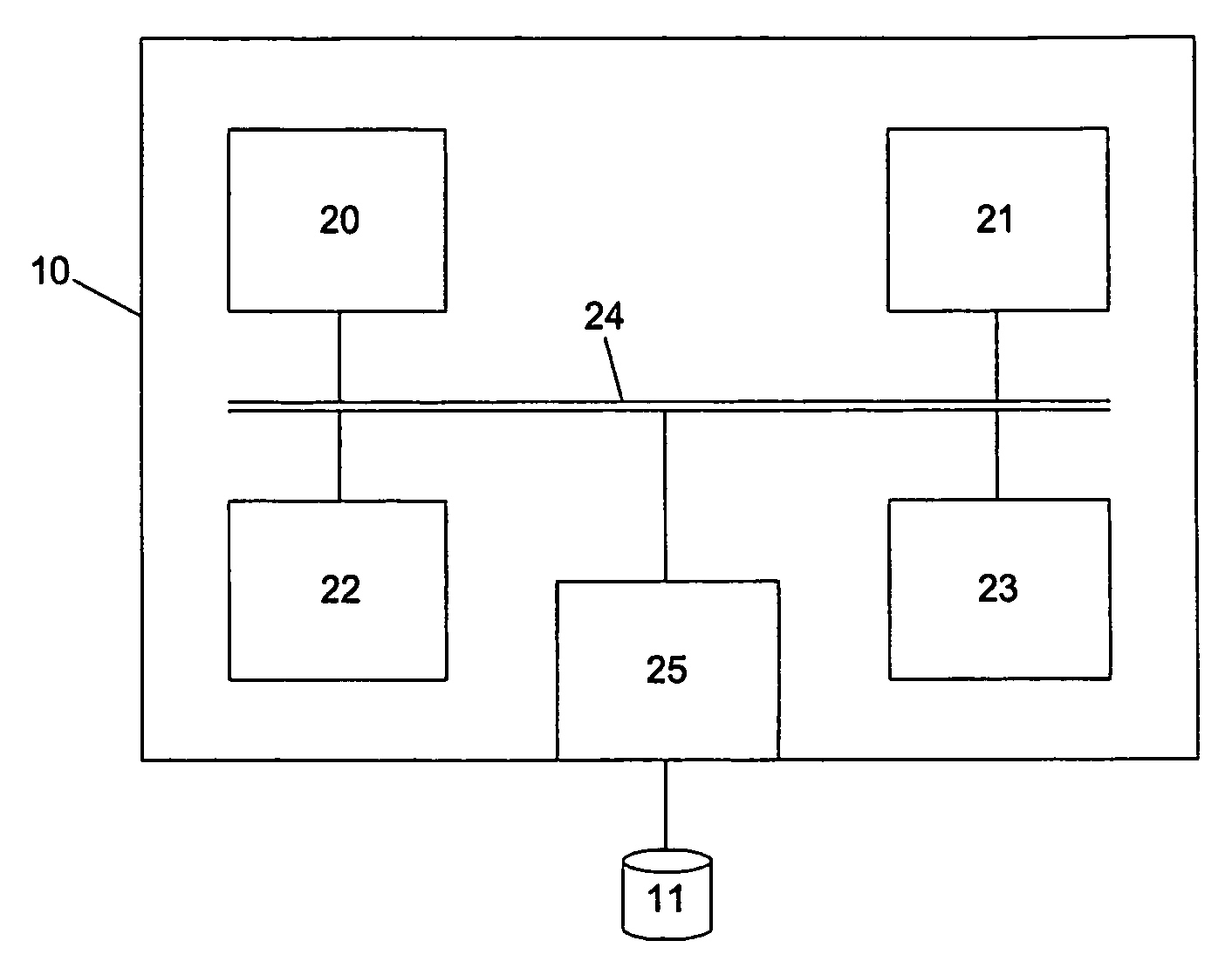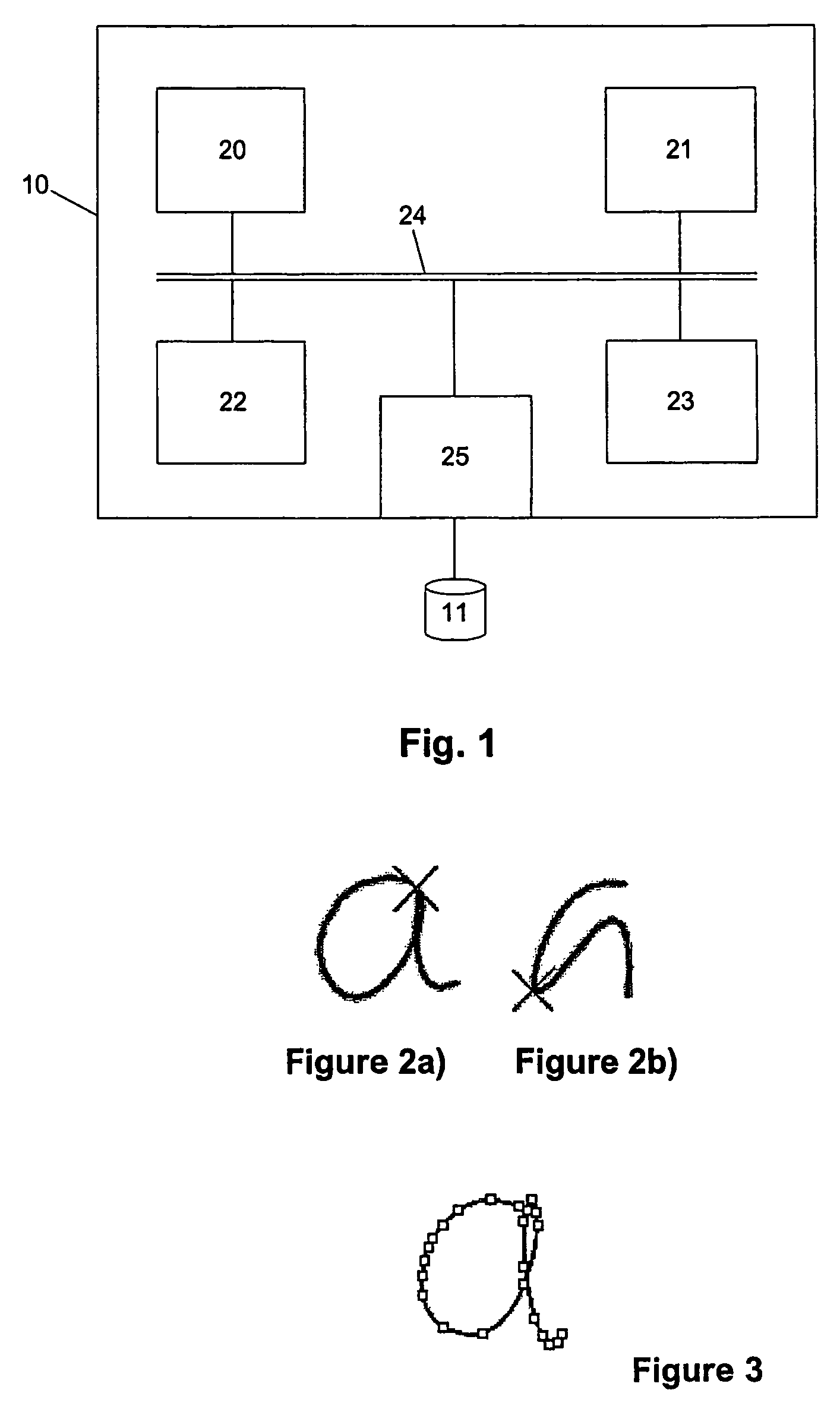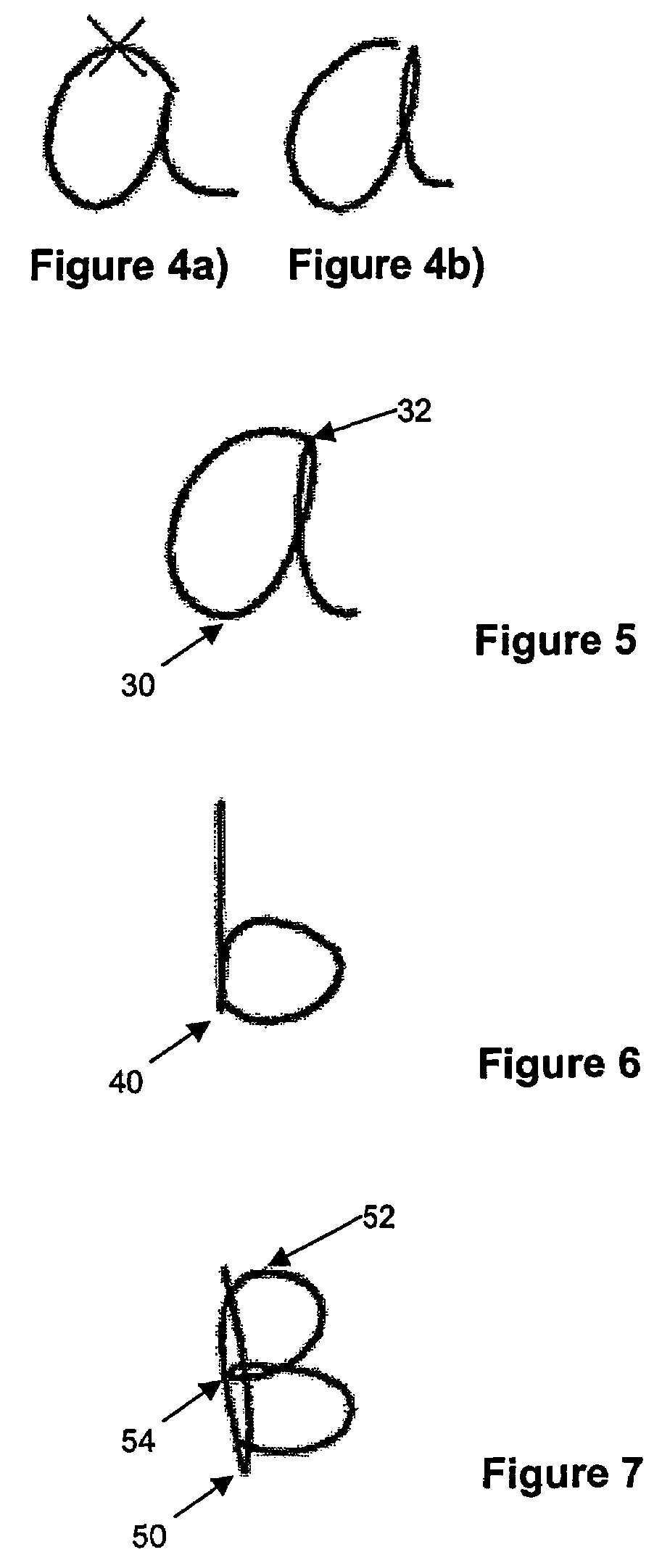Method and apparatus for decoding handwritten characters
a handwritten character and decoding technology, applied in the field of handwritten data interpretation and decoding, can solve the problems of major recognition errors, minimal use of commercially viable handwriting recognition systems in computing devices, and difficulty in automatic computer recognition of different user's handwriting, so as to facilitate the recognition of different forms of the same character
- Summary
- Abstract
- Description
- Claims
- Application Information
AI Technical Summary
Benefits of technology
Problems solved by technology
Method used
Image
Examples
Embodiment Construction
[0056]The following modes are described as applied to the written description and appended claims in order to provide a more precise understanding of the subject matter of the present invention.
[0057]The following examples provide a more detailed outline of one embodiment of the present invention. These examples are intended to be merely illustrative and not limiting of the scope of the present invention.
[0058]The present invention provides a method for performing handwritten character recognition. Also provided is an apparatus for performing the method. In the figures, incorporated to illustrate the features of the present invention, like reference numerals are used to identify like parts throughout the figures.
[0059]Methods according to embodiments of the invention can be performed using a processing system an example of which is shown in FIG. 1.
[0060]In particular, the processing system 10 generally includes at least a processor 20, a memory 21, and an input device 22, such as a ...
PUM
 Login to View More
Login to View More Abstract
Description
Claims
Application Information
 Login to View More
Login to View More - R&D
- Intellectual Property
- Life Sciences
- Materials
- Tech Scout
- Unparalleled Data Quality
- Higher Quality Content
- 60% Fewer Hallucinations
Browse by: Latest US Patents, China's latest patents, Technical Efficacy Thesaurus, Application Domain, Technology Topic, Popular Technical Reports.
© 2025 PatSnap. All rights reserved.Legal|Privacy policy|Modern Slavery Act Transparency Statement|Sitemap|About US| Contact US: help@patsnap.com



